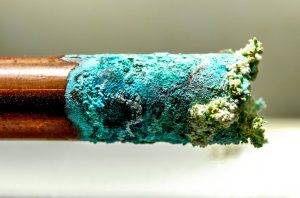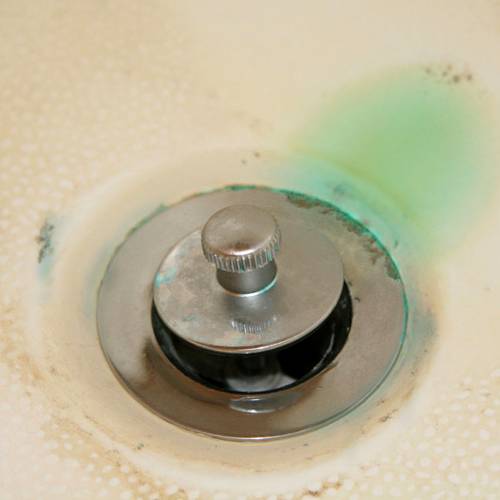Why Is Your White Porcelain Turning Blue-Green?
If you’ve noticed bluish-green staining around your faucets, sinks, or tubs, you’re likely seeing the effects of copper pipe corrosion. This type of staining is a sign that your water’s pH balance is too low, meaning the water is more acidic than it should be. Acidic water corrodes copper plumbing, releasing copper ions into your water supply—and leaving visible stains behind. Usually, raising the pH levels of your water will help to eliminate corrosion and staining and will ensure that your water is safe and healthy to drink.
How pH Levels Affect Copper Pipes

When the pH of your water drops below 7.0, it becomes acidic, which accelerates the corrosion of copper pipes and fixtures. Over time, this can lead to:
-
Blue-green staining on porcelain, tile, and plumbing fixtures
-
An unpleasant metallic taste in your drinking water
-
Hair discoloration due to copper buildup
-
Pinhole leaks in pipes, increasing the risk of water damage and costly repairs
-
Corrosion of aluminum and other metal fixtures
If you’ve already seen signs of copper staining, it’s important to test your water’s pH and correct it as soon as possible. Adjusting the pH to a neutral or slightly alkaline level can significantly reduce corrosion and protect both your plumbing and your health.
How Much Copper Is Too Much?
Copper is a natural element found in many foods and is essential in small amounts. However, excess copper in drinking water can lead to:
-
Nausea and abdominal cramps
-
Vomiting and diarrhea
-
In severe or prolonged cases, liver and kidney damage
Children and pets—especially fish—are more sensitive to elevated copper levels, making early detection and treatment especially important for families.
The U.S. Environmental Protection Agency (EPA) recommends copper levels in drinking water not exceed 1.3 mg/L (milligrams per liter).
Hot Water Makes It Worse
Hot water tends to accelerate chemical reactions, including the leaching of copper from pipes. If you already have visible signs of corrosion, avoid using hot tap water for drinking or cooking, as it may contain higher levels of copper.
Solutions for Copper in Tap Water
The good news? You don’t have to live with copper-contaminated water or risk long-term damage to your health or plumbing.
-
Start with a free professional water test to determine your water’s pH and copper levels
-
If a problem is found, our experts will recommend the right solution—whether it’s pH adjustment, corrosion control systems, or specialized filtration
-
We’ll guide you through every step to ensure your water is clean, safe, and free from staining or metallic taste




